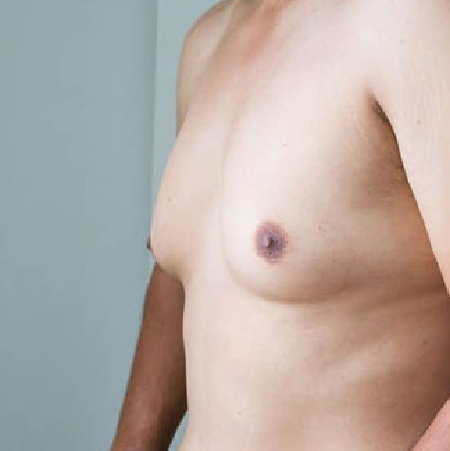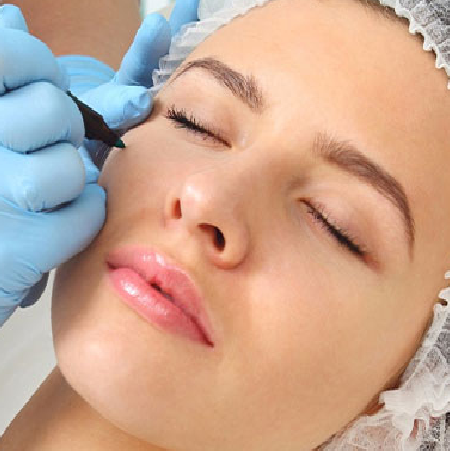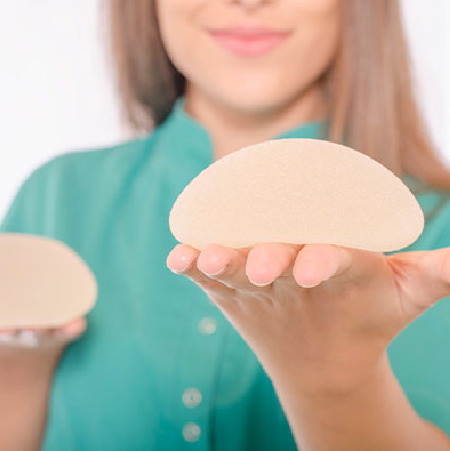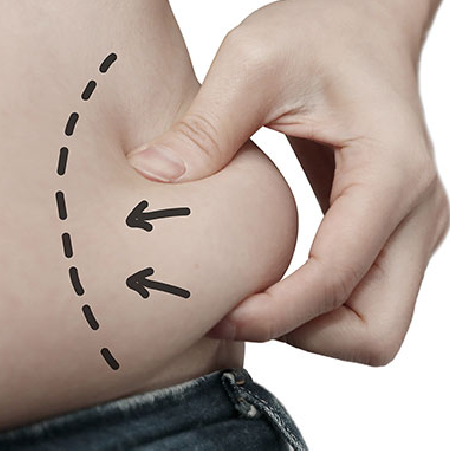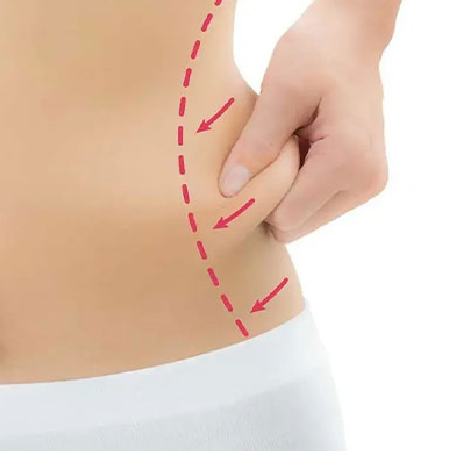Nose fillers side effects
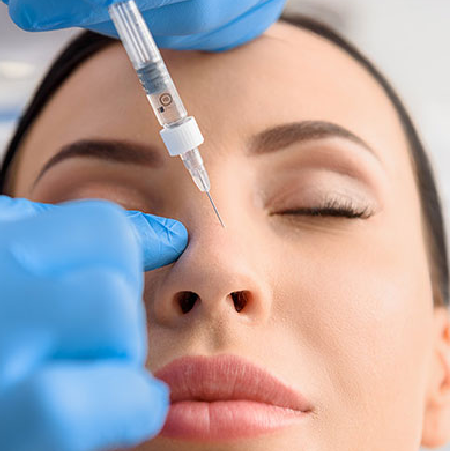
Nose fillers, which are also called dermal fillers or liquid rhinoplasty, are usually thought to be safe, but they can have side effects. Before going through the process, it’s important to know about these possible side effects. Here are some of the most common side effects of nose fillers:
Temporary Swelling and Bruising: It is normal for nose fillers to cause swelling and bruising. This can happen where the injections were given and can last from a few days to a week. Using ice packs and taking painkillers you can buy over-the-counter can help ease these sensations.
Redness and staining: Some people may get redness or staining at the injection sites for a short time. Most of the time, this is mild and goes away on its own in a few days.
Allergic responses: Allergic responses to nose fillers are rare, but they can happen. At the injection sites, there may be swelling, itching, a rash, or hives. If you have had allergies in the past, you should tell your doctor or nurse before the surgery.
Lumps or Bumps: Sometimes, after getting nose fillers, small lumps or bumps can form under the skin. Most of the time, these are brief, and a doctor or nurse can massage or dissolve them if needed.
Infection: There is a small chance of getting an infection at the injection sites, but it is rare. To reduce this danger as much as possible, it is important to make sure that the procedure is done in a clean, sterile setting by a qualified and experienced medical professional.
Vascular issues: Rarely, nose fillers can accidentally enter a blood vessel, which can be problematic. This can lead to skin necrosis (the death of skin cells), changes in vision, or a stroke. These serious problems happen very rarely, but they show how important it is to choose a skilled and experienced shooter.
Before getting cosmetic treatment, it’s important to talk to your doctor about the possible side effects and risks. They will be able to look at your specific situation, talk to you about how likely it is that you will have side effects, and give you the right aftercare advice to reduce the risk of complications. If you have any side effects that last or make you feel worried after getting nose fillers, you should see a doctor right away.
If you want to have nose job in Iran you can contact us through WhatsApp.
Side effects of filler injections in the nose
Filler injections in the nose produce small, impermanent changes that can cause blindness or necrosis.
Nose fillers, which are also called dermal fillers or liquid rhinoplasty, are usually thought to be safe, but they can have side effects. Before going through the process, it’s important to know about these possible side effects. Here are some of the most common side effects of nose fillers:
Temporary Swelling and Bruising: It is normal for nose fillers to cause swelling and bruising. This can happen where the injections were given and can last from a few days to a week. Using ice packs and taking painkillers you can buy over-the-counter can help ease these sensations.
Redness and staining: Some people may get redness or staining at the injection sites for a short time. Most of the time, this is mild and goes away on its own in a few days.

Allergic responses: Allergic responses to nose fillers are rare, but they can happen. At the injection sites, there may be swelling, itching, a rash, or hives. If you have had allergies in the past, you should tell your doctor or nurse before the surgery.
Lumps or Bumps: Sometimes, after getting nose fillers, small lumps or bumps can form under the skin. Most of the time, these are brief, and a doctor or nurse can massage or dissolve them if needed.
Infection: There is a small chance of getting an infection at the injection sites, but it is rare. To reduce this danger as much as possible, it is important to make sure that the procedure is done in a clean, sterile setting by a qualified and experienced medical professional.
Vascular issues: Rarely, nose fillers can accidentally enter a blood vessel, which can be problematic. This can lead to skin necrosis (the death of skin cells), changes in vision, or a stroke. These serious problems happen very rarely, but they show how important it is to choose a skilled and experienced shooter.
Before getting cosmetic treatment, it’s important to talk to your doctor about the possible side effects and risks. They will be able to look at your specific situation, talk to you about how likely it is that you will have side effects, and give you the right aftercare advice to reduce the risk of complications. If you have any side effects that last or make you feel worried after getting nose fillers, you should see a doctor right away.
Are nonsurgical nose jobs safe?
When carried out by a licensed and experienced medical professional, nonsurgical nose jobs are typically considered to be safe. But, like any medical treatment, there are some possible risks and things to think about.
Here are a few important things to think about when it comes to the safety of painless nose jobs:
The expertise of the Provider: It is important to find a skilled and informed healthcare professional who specializes in nonsurgical cosmetic procedures. They should know a lot about how the face works, how to give injections, and what items are used. Complications are much less likely when people have the right skills and experience.
Product Safety: Dermal fillers, such as hyaluronic acid (HA) fillers, are often used for nonsurgical nose jobs. Most people think that HA fillers are safe and don’t bother them. To lessen the likelihood of side effects or issues, it is crucial to use products that are FDA-approved and are known to be safe.
Individual Factors: Whether or not a nonsurgical nose job is safe and right for you depends on things like your medical background, allergies, and any nasal problems you already have. During the consultation, it’s important to tell your healthcare provider everything they need to know so they can make an accurate review of your case.
Possible Risks and Side Effects: Nonsurgical nose jobs rarely cause problems, but they can cause brief swelling, bruising, redness, and pain at the injection sites. Serious problems, like an infection, an allergic reaction, or problems with the blood vessels, are rare but can happen. Complications can be kept to a minimum if you choose a skilled provider and do what they tell you to do after the procedure.
Results that Last Only a Short Time: It’s important to remember that the results of a painless nose job only last a short time. The results can last for different amounts of time, based on things like the type of filler used and how fast or slow each person’s metabolism is. Touch-up treatments might be needed to keep the results you want.
It’s best to have a thorough conversation with a trained medical professional who can look at your specific situation, talk to you about the possible risks and benefits, and give you personalized advice. Based on your unique needs and goals, they will be able to tell you if a painless nose job is a good and safe choice for you.
Can Nose Filler Migrate?
Nose fillers, like all other facial fillers, have the potential to spread, but this happens rarely. Migration is the process of filler material moving from where it was put to other parts of the face. But if you use the right injection methods and the right filler products, you can reduce the risk of migration.
The risk of migration can be affected by several things, such as the type of filler used, the depth and location of the injection, and the person’s body. Some types of fillers, like hyaluronic acid (HA) fillers, which are often used for nose augmentation, have a lower risk of spreading than other types of fillers.
To reduce the risk of migration, it is important to choose a qualified and experienced medical worker who knows a lot about facial anatomy and injection methods. They will carefully look at your case, figure out the right amount and placement of filler, and use exact injection methods to get the best results and reduce the chance of migration.
It’s important to follow the directions your doctor or nurse gives you after treatment. Avoid putting too much pressure on or touching the treated area right after the process to keep the filler from moving.
After getting a nose filler, it’s important to talk to your doctor if you notice any strange changes, like bumps or unevenness. They can look at the situation and offer the right steps to take to solve any problems.
Remember that choosing a qualified expert and talking openly about your goals and expectations will make any cosmetic treatment, like nose fillers, safer and more effective.
Read more: Nose filler or nose job
What is HIKO nose Lift?
The HIKO Nose Thread Lift is a non-surgical way to improve the way the nose looks. It is a slightly invasive method that uses PDO (polydioxanone) threads to change the shape of the nose and lift it. During the HIKO Nose Thread Lift treatment, thin, dissolvable sutures called PDO threads are put into the nose through tiny cuts or openings. The threads are put in the nose in a way that supports the nose, lifts droopy tissues, and changes the shape of the nose.
The threads help the body make more collagen, which makes the skin more flexible and tight over time. This makes the effects last even after the threads have broken down. The HIKO Nose Thread Lift can fix several visual problems, like a flat bridge, a droopy tip, or a nose that isn’t symmetrical. It can make the nose look more defined, raised, and balanced without having to have surgery.
Most of the time, the process is done with local anesthesia, and recovery time is short compared to surgical rhinoplasty. There may be some temporary side effects, like swelling, bruises, or slight discomfort, but they usually go away in a few days to a week.
To find out if you are a good candidate for a HIKO Nose Thread Lift, you should talk to a qualified and experienced medical professional who specializes in the process. They will look at your worries, goals, and medical history to give you personalized advice and make sure you get the best results possible.
How long does a nonsurgical nose job last?
The effects of a painless nose job, also called liquid rhinoplasty or nose fillers, can last for a long time or only a short time. Usually, how long the results last depends on the type of filler used and things about the person, like their metabolism and way of life.
Hyaluronic acid (HA) fillers are the ones that are most often used for painless nose jobs. These fillers are safe for the body and work right away. HA fillers can last anywhere from a few months to more than a year. But it’s important to remember that the effects are only short-term. How the body breaks down the filler and how quickly it breaks down also affects how long the effects last. How long the effects last depends on things like how much filler was used, which areas were treated, and how each person is different.
To keep the results you want, you may need to get more treatments. It’s important to follow up with your doctor and talk about how often you should get touch-up treatments. They can give you personalized advice based on your situation and help you get the results you want. It’s important to talk to a qualified medical worker who has experience doing nose jobs without surgery. They will be able to look at your specific situation, talk to you about how long you can expect results to last, and give you personalized advice based on your unique situation and goals.
How old does a person need to be to get a nonsurgical nose job?
The minimum age for a nonsurgical nose job, also called liquid rhinoplasty or nose fillers, can change from country to country and from healthcare provider to healthcare provider. People who are at least 18 years old can usually get nose jobs that don’t involve surgery. The age limit is mostly there to make sure that people are physically mature enough to have cosmetic procedures done on them. During youth, facial features and structures continue to grow and change, so it’s important to wait until the face is fully grown before making any cosmetic changes.
Is a nonsurgical nose job worth it?
Whether or not a nonsurgical nose job is worth it depends on the person’s goals, expectations, and preferences. Here are some things to think about when deciding if a nose job without surgery is worth it for you:
Noninvasive Option: Nonsurgical nose jobs are an alternative to surgical rhinoplasty that doesn’t involve cutting into the nose. A nonsurgical nose job can be a good choice if you want to avoid surgery and its risks, downtime, and possible problems.
Results That Last Only a Short Time: It’s important to remember that the results of a nose job without surgery only last a short time. The effects can last for different amounts of time, usually from a few months to over a year. Surgical rhinoplasty may be a better choice if you want to make changes to your nose that will last a long time or be permanent.
Nonsurgical nose jobs are usually outpatient treatments that take less time to heal than surgical nose jobs. The process itself doesn’t take too long, and most people can go back to their normal lives quickly afterward.
Improving the look of the nose: Nonsurgical nose jobs can fix things like a flat bridge, a droopy tip, or an uneven nose. Without surgery, they can make small changes and improvements to the shape, contour, and general look of the nose.
Personal things: When deciding if a nonsurgical nose job is worth it, it’s important to think about your own goals, expectations, and income. Non-surgical choices may be less expensive than surgery, but you may need to keep getting treatments over time to keep getting the results you want.
In the end, whether or not a non-surgical nose job is worth it depends on your own preferences and circumstances. It’s best to talk to a qualified health care worker who specialises in cosmetic procedures that don’t involve surgery. They can look at your specific worries, talk to you about the pros and cons of the procedure, and give you personalised advice based on your case.



